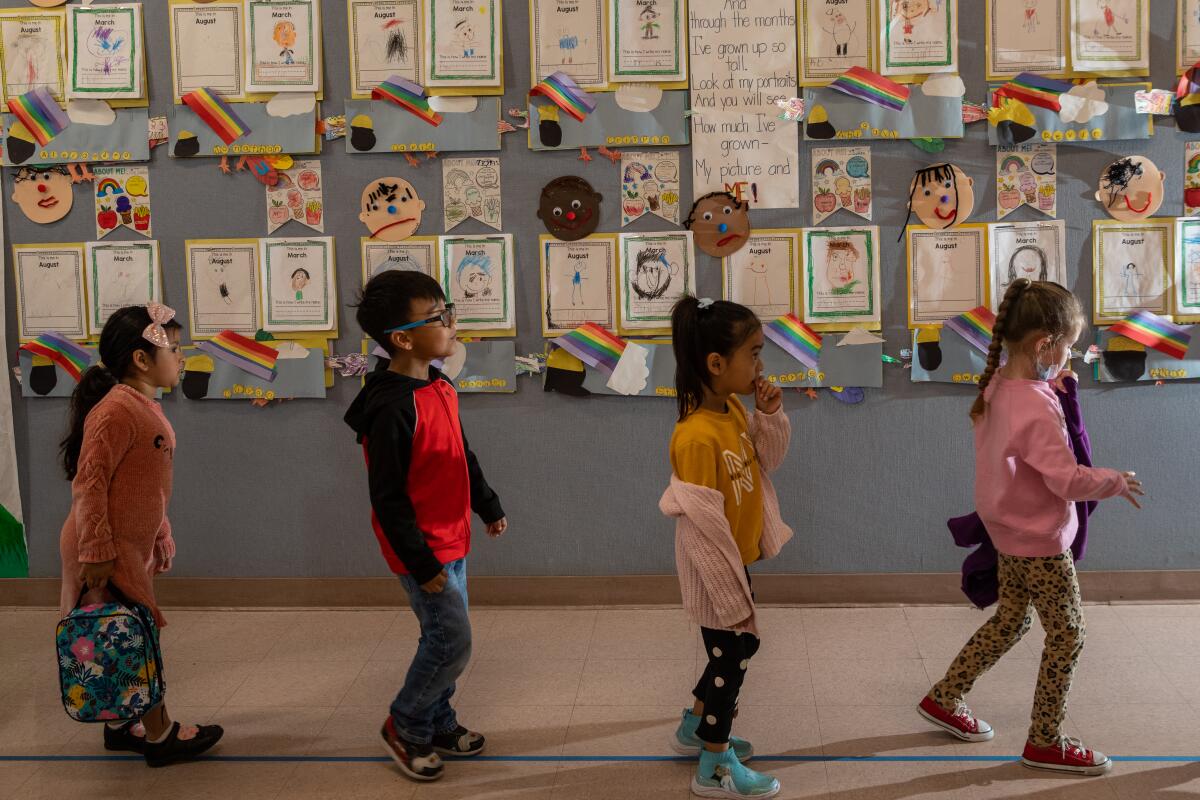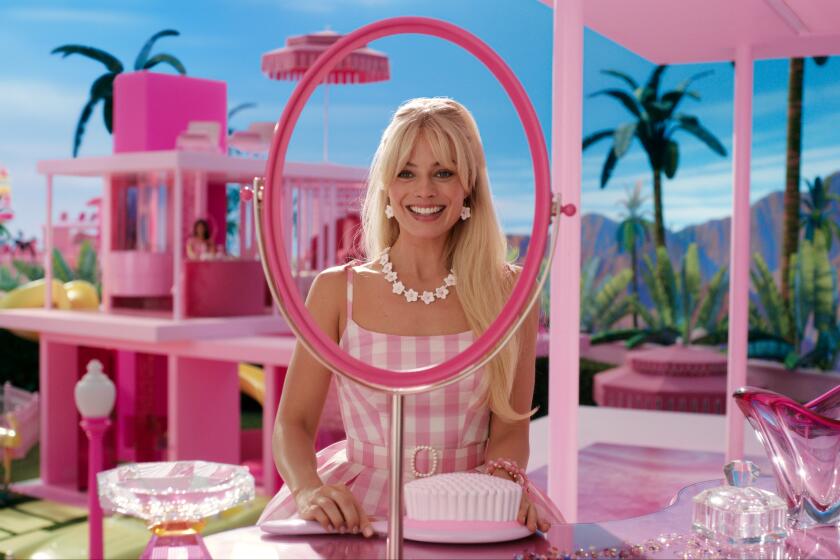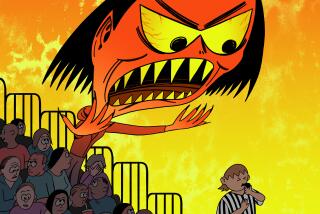Holy you-know-what! When did the kids start swearing like sailors?

- Share via
The other morning, on the way to school, my eighth-grade niece was regaling me with stories about the costumes kids wore on Halloween. One classmate, she said, came dressed as a “sexy-ass rabbit.”
I was taken aback, but not by the image of a middle schooler in a body suit with bunny ears. When, I began to wonder, did my niece start so casually salting her language with — well — salty language?
In truth, it’s been happening for a while. The better question, probably, is when did she start feeling comfortable using foul language around me? Or, better still, when did I start feeling comfortable using foul language around her?
For the five years she’s lived with me, she has often overheard me swearing in conversations with friends. I tend to use the F-word the way teenagers use the word “like.” For me, it’s the perfect filler. It contains multitudes; it’s a punctuation, a way to emphasize a point. It can be used in anger, in sympathy or in glee (eff-yeah!).
“Language, Auntie!” she will say, prompting a — yes, I know, hypocritical — lecture from me on why it’s OK for me to say things that she can’t.
‘Kidulting’ or ‘rejuveniling’ lets grown-ups with jobs and mortgages to stay in touch with the comforts and pleasures of childhood.
When I asked her whether she uses that kind of language in class, she looked shocked. “Never, Auntie,” she said solemnly.
“Children are really good at code-switching, that is, knowing what kind of language they are supposed to use when,” says Emma Byrne, an expert on robotics and artificial intelligence who wrote the 2017 book “Swearing Is Good for You: The Amazing Science of Bad Language.”
When my niece was in elementary school, one of her classmates was a tiny, angelic-looking little boy whose cover was completely blown when I took a look at their group texts. That tiny angel, who was dealing with upheaval in his family life, swore like a drunken sailor.
“If you’ve suddenly noticed your kid is swearing, talking to them about the emotions behind swearing seems to be the best thing we can do,” Byrne told me during a Zoom conversation from London, where she lives.
She became interested in swearing while working on brain models with neuroscientists.
A Georgia elementary school principal panicked, pulled the plug on a Batman lecture and apologized to parents because gayness was part of the presentation.
“I realized that one of the most salient things that shapes how we think is our anticipation of pain and our avoidance of pain,” she said. Studies have shown that swearing can work as “a really effective painkiller,” she said.
It turns out that people can keep their hands immersed in ice water for half as long again when they are swearing. “They also report that the ice feels less cold,” she said. “The swearing really seems to help with analgesia.”
The enduring interest in blue speech has led to a surprisingly large body of academic research.
“I was astonished, and still am, by how much work is being produced and how many fields it touches on: neuroscience, psychology, surgery, history, primatology,” Byrne said. (Yes, primates swear too.) “It turns out that swearing is a really useful indicator of emotional states, what’s going on in the brain and even in our culture.”
The proliferation of profanity reflects a loosening of social standards and a reaction to today’s tumultuous politics. It’s meant to show passion, though it risks offending some voters.
Anyone seeking to learn about foul language will find no dearth of books, mostly investigating the history and evolution of cussing. Of course, not everyone thinks swearing is salutary. The 2000 book “Cuss Control: The Complete Book on How to Curb Your Cursing” posits that the widespread use of foul language has contributed to the decline of civility and good manners. (Perhaps not coincidentally, the book appears to be out of print.)
In 2021, the linguist John McWhorter published “Nine Nasty Words: English in the Gutter — Then, Now, and Forever.” Suffice to say there is plenty of crossover with George Carlin’s infamous list of the seven words you can’t say on television.
Not much of the research focuses specifically on children, but it’s absolutely no surprise that children as young as 2 indulge.
I always seasoned my vocabulary with as many four-letter words as 50-cent ones, at least until my first child was born two years ago.
Sometimes they do so unwittingly, as in the widely seen Instagram video that shows a little girl looking out her window and saying, “A [F-word] goat outside.”
“It’s just a goat,” her mother says.
“No,” says the toddler. “It’s a [F-word] goat.”
And sometimes children who use foul language know exactly what they are doing.
One of my nephews discovered the shock value of cursing when he was about 4 years old. From the back seat one day, strapped into his safety seat, he spewed the F-word with relish. In my rearview mirror, I saw that he was looking at me expectantly, waiting for a reaction.
It was my job, as the responsible adult, to neutralize the situation by not reacting at all. But it took all the self-restraint I had not to burst out laughing.
Swearing is clearly not only way to relieve pain
Sometimes kids just viscerally understand that nothing but a swear word will drive home their point.
The first time Byrne heard her child swear was in a busy restaurant when her family was on holiday. Her daughter, 2½ at the time, was unhappily trapped in a high chair.
“I made this deal,” said Byrne, “that if she would please stay in this high chair, as soon as we are finished, we will go outside and you can have a run around. You just need to be patient.”
As Byrne chatted with her husband and sipped a glass of wine, she heard a “beautiful, well-articulated voice” with a cadence that sounded very much like her own: “Mommy, get me out of this f—ing high chair.”
At that moment, said Byrne, “I was really thankful that she had the ability to communicate the extent of her feelings that didn’t involve hurling a plate across the restaurant.”
She knew that using the two most potent syllables in the English language was the most effective way to make her point.
To her credit, that toddler actually used her words.
More to Read
A cure for the common opinion
Get thought-provoking perspectives with our weekly newsletter.
You may occasionally receive promotional content from the Los Angeles Times.














